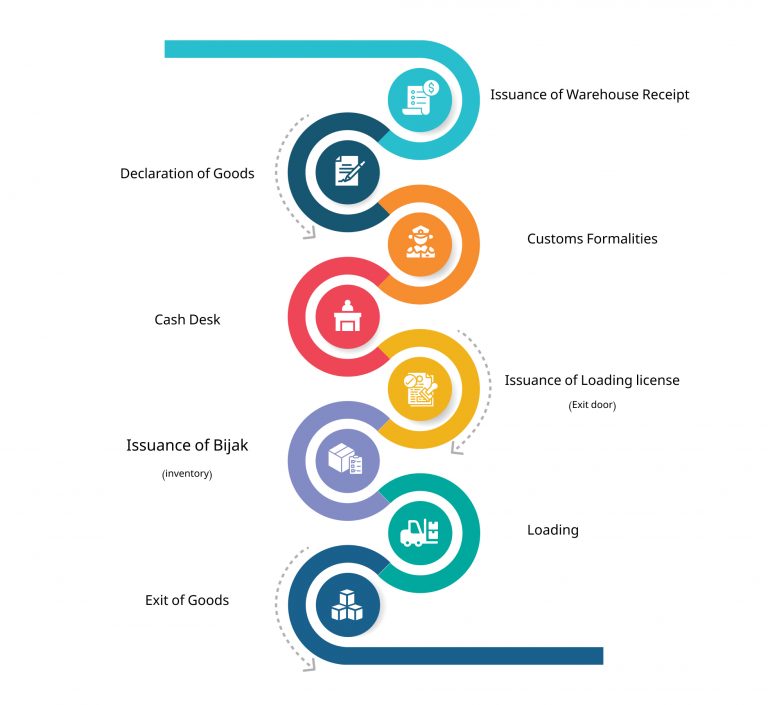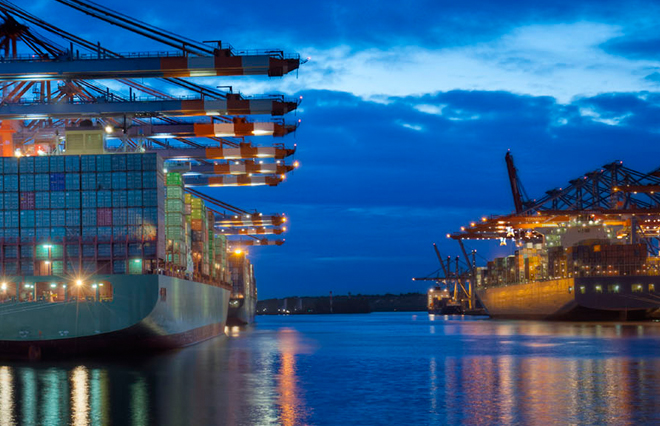Customs clearance is a multi-stage process that sometimes baffles people. Therefore, several consulting services companies seek to facilitate this process by offering some simple methods. Enlisting qualified staff, this company aims to easily perform the clearance process, which is an integral part of trade.
Export

Customs Clearance Stages:
Customs clearance includes several stages, which are described below:
- It is necessary to register the tax declaration in the EPL system.
Clearance starts when goods arrive at a customs office. In Stage 1, the tax declaration is registered and relevant data are entered into the system. As the Customs system is linked to EPL, all these stages are performed online, and individuals do not need to visit customs offices personally. A clearance directive on Islamic Republic of Iran’s Customs Administration’s website (IRICA) mandates that for any imported or exported goods, a declaration must be completed and submitted to IRICA or relevant customs offices.
To complete a tax declaration for imported goods, the importer or their authorized representative is to prepare and complete the following documents:
- A final tax declaration for imported goods, which is filled ad registered in EPL.
- A copy of the International Import/Export License, together with its original, if it is the first time, for coding purposes.
- Warehouse bills and receipts, given by the warehouse keeper to the goods owner.
- Bills of lading
- A delivery order
- Different certificates of origin
- Invoices
- If payments are made by a bill of exchange or L/C, a note of the bill of exchange or forex supply must be submitted.
- Order permits
- Customs insurance policies
- An operation license for manufacturing companies
- Packing lists
- Required catalogs and brochures
- Clearance permits from health, standard, quarantine, atomic energy, etc. authorities
- Necessary powers of attorney, which are notarized
- Export licenses for cases when importation is made in exchange for exportation.
It is noteworthy that you can download a draft declaration from EPL in order to clear your goods through customs. Once you print and fill it out, you will get to know various items required. A goods owner or their authorized representative may fill out the declaration. Considering the above remarks, a person needs to prepare the required documents, obtain the permits, and register them together with the declaration in EPL. An important point to remember when clearing goods is the dues that must be paid to import goods; this must be stated clearly in the declaration. As a result, serious errors and damages will be averted.
Once you uploaded the above documents properly, you need to save a serial number and a reference number the systems sends you for use in later stages.
- It is necessary to get a registration/entry number for identification and route.
In this stage, it is necessary to arrange for identity to be established and for the declaration to be confirmed. The Identification Department plays a major role in the Customs Office; first, it examines the papers and documents submitted by the user/client, and then issues a registration/entry number when everything is in order. Simply put, registration/entry means that a declaration is registered with the Customs Office for importing goods. A declaration will be sealed when it receives a registration number. Given the importance of customs affairs and to prevent any human errors, some monitoring and control steps need to be taken. These steps are performed in three phases of green, yellow, and red by a risk management system; all of them are done systematically by a computer, and goods are randomly placed in one of these routs on the basis of their validity, type, percentage of import duties, etc.

Different Customs Clearance Routes:
Considering the above remarks, it can be concluded that there are three main routes for clearing goods through customs:
Green Route: when all permits are obtained and directly sent to the Cash Department
Yellow Route: when all documents are examined; once they go through the Identification Department, they are sent to the Cash Department
Red Route: goods go through physical inspection; once they receive required permits, they are sent to the Valuation Department in order for examination by the customs team and submission to the Cash Department
Electronic Packing List System
The Electronic Packing List System, usually abbreviated to EPL, is a window for international/cross-border trade. EPL serves as a link between customs offices and users/clients. Using EPL, you can handle all affairs related to importation, exportation, and transit on the Internet. EPL started in 2013 and is currently used in all customs offices. To clear goods through customs, you need to visit EPL and start the clearance process from the cross-border trade single window. If you wish to use this system, you need to go to a customs office’s IT department to receive a username and password, which serve as your ID codes. Then, you just need to visit https://epl.irica.ir. In EPL, you can perform any tele-declaration affairs such as importation, exportation, and transit. Using this system, you can also get a draft declaration, receive reports, pay commissions, etc. In case you have any problem working with online systems or filling out a declaration, you can download a draft declaration and fill it out beforehand so you will not have any problem when completing the declaration online.
Customs declarations must be completed by the goods owner or their authorized representative. These declarations are uploaded in EPL together with other required documents so that the customs office can examine them. The importing person or company must pay the import duties, which are calculated based on the declaration and announced by the customs office. The declaration must be filled out with utmost care and attention, or there will be massive financial damages. To avert any potential error in this regard, there are many consulting companies that can assist you in completing required forms properly.




